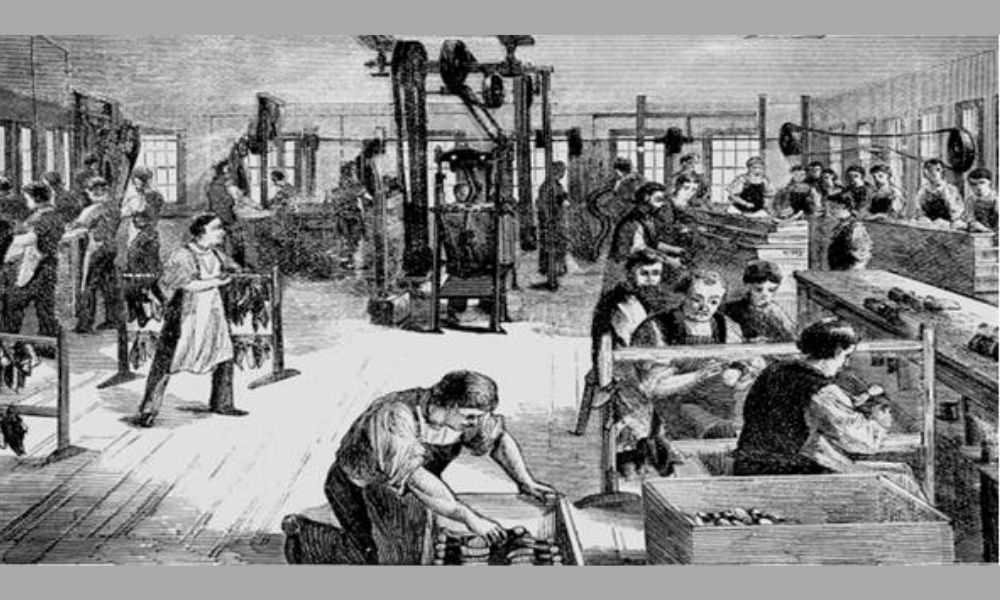The Industrial Revolution, which began in the late 18th century in Britain, was a period of significant economic, social, and technological changes that transformed the way people lived and worked. It marked the transition from manual labor to machine-based manufacturing, leading to a massive increase in production and productivity. The Industrial Revolution had a profound impact on the world, and its effects are still felt today. However, as with any major historical event, there were winners and losers. In this article, we will explore who benefited the most from the Industrial Revolution and why.
Contents
The Rise of the Industrialists
One of the most significant beneficiaries of the Industrial Revolution was the emerging class of industrialists. These were the entrepreneurs who owned and operated the factories and mills that produced goods on a large scale. They were the driving force behind the industrialization of Britain and later, other countries. The Industrial Revolution provided them with the perfect opportunity to amass wealth and power.
The industrialists were able to take advantage of the new technologies and methods of production to increase their profits. They invested in new machinery, improved transportation systems, and expanded their businesses to meet the growing demand for goods. As a result, they became incredibly wealthy and influential, dominating the economic and political landscape of their respective countries.
Read:What happened to teengallery?One of the most famous industrialists of the time was Andrew Carnegie, who made his fortune in the steel industry. He started as a poor immigrant from Scotland and went on to become one of the richest men in the world. His success story is a testament to the opportunities that the Industrial Revolution provided for ambitious and hardworking individuals.
The Growth of the Middle Class
The Industrial Revolution also led to the growth of the middle class, which was made up of professionals, merchants, and skilled workers. These were the people who worked in the factories and mills, but unlike the working class, they had a higher standard of living and more disposable income. They were the backbone of the industrial economy, and their demand for goods and services fueled the growth of the industrialists.
The middle class also benefited from the new job opportunities created by the Industrial Revolution. As factories and mills sprang up, there was a need for managers, accountants, engineers, and other skilled workers to run them. This led to the emergence of new professions and the expansion of existing ones. For example, the demand for engineers increased significantly, leading to the establishment of engineering schools and the professionalization of the field.
Read:What a tragedy daily themed crossword?The growth of the middle class also had a significant impact on society. They had more leisure time and disposable income, which led to the development of new forms of entertainment, such as theaters, music halls, and sports clubs. They also had access to education and were able to improve their social status, creating a more diverse and dynamic society.
The Working Class: A Double-Edged Sword
While the Industrial Revolution brought prosperity to some, it also had a devastating impact on others, particularly the working class. The working class was made up of unskilled laborers who worked in the factories and mills for long hours and low wages. They were the backbone of the industrial economy, but they did not share in its wealth.
The working conditions in the factories and mills were harsh, with workers often toiling for 12-16 hours a day in dangerous and unsanitary conditions. They were paid meager wages and had no job security or benefits. As a result, they lived in poverty and squalor, with no hope of improving their situation. The working class was the most significant loser of the Industrial Revolution, and their plight sparked social and political movements that sought to improve their lives.
Read:What does macek consulting llc sell?However, the Industrial Revolution also had a positive impact on the working class. It provided them with employment opportunities and a chance to escape the poverty of rural life. Many people migrated from the countryside to the cities in search of work, and this led to the growth of urban centers. The working class also benefited from the new consumer goods that were produced in the factories, making their lives more comfortable and convenient.
The Impact on Women and Children
Women and children were also significantly affected by the Industrial Revolution. With the rise of factories and mills, women and children were employed in large numbers to work in the textile industry. They were paid even lower wages than men and were often subjected to harsh working conditions. Children, in particular, were exploited, as they were seen as a source of cheap labor.
However, the Industrial Revolution also brought about some positive changes for women and children. With the growth of the middle class, women were able to find employment as domestic servants, teachers, and nurses. This gave them a degree of financial independence and social mobility that was previously unavailable to them. Children also benefited from the expansion of education, as more schools were established to meet the growing demand for skilled workers.
The Impact on Agriculture
The Industrial Revolution had a significant impact on agriculture, which was the primary source of livelihood for most people at the time. With the growth of industry, there was a decline in the demand for agricultural products, leading to a decrease in prices. This, coupled with the enclosure of common lands, forced many small farmers and peasants off their land and into the cities in search of work.
However, the Industrial Revolution also brought about improvements in agriculture. New technologies, such as the seed drill and the threshing machine, increased productivity and reduced the need for manual labor. This led to a surplus of food, which helped to feed the growing population. The development of new transportation systems also made it easier to transport goods to markets, leading to the growth of commercial farming.
Conclusion:
The Industrial Revolution was a period of significant change that transformed the world in ways that were unimaginable before. It brought about economic growth, technological advancements, and improvements in living standards. However, it also had its share of winners and losers. The industrialists and the middle class were the primary beneficiaries, while the working class, women, and children suffered the most. The Industrial Revolution had a lasting impact on society, and its effects are still felt today. It paved the way for the modern world and set the stage for the industrialized societies that we live in today.
As we look back on this pivotal period in human history, it is essential to recognize the contributions of all those who played a role, whether they were industrialists, workers, or farmers. The Industrial Revolution was a collective effort that shaped the world we live in today, and it is up to us to learn from its successes and failures as we continue to progress and evolve as a society.









